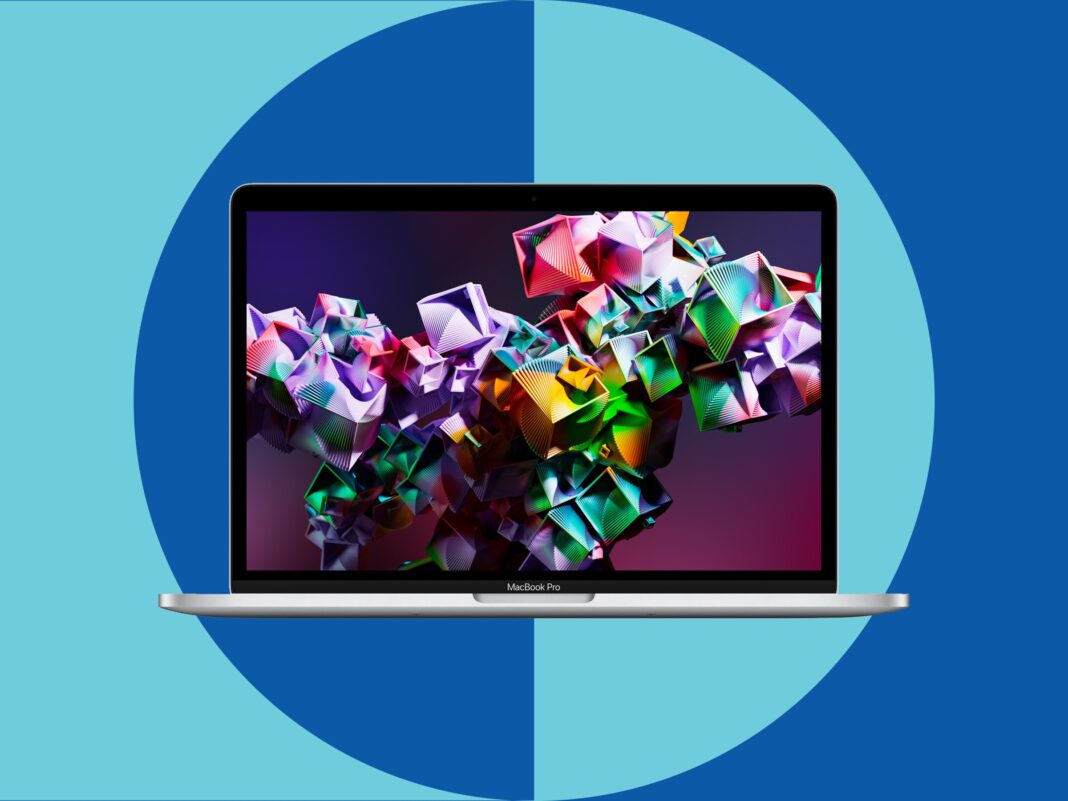on a scale of one to 10 (one being least excited), I’d say I was at level two when I unboxed the new MacBook Pro 2022 . It’s hard to get excited about a machine that’s quite literally a processor update and nothing more. This 13-inch laptop, which once felt like a powerhouse despite its small size, now feels aimless.
Apple didn’t give it the upgrades it introduced in last year’s high-end MacBook Pro models , such as a sleeker redesign, 1080p webcam, slimmer bezels around the display, and a MagSafe charger. Weirdly, many of these changes made it to the brand-new and cheaper MacBook Air , which is also powered by the same M2 processor inside the 13-inch MacBook Pro. What’s up with that? It’s a perplexing addition to the MacBook lineup.
Yes, the new 13-inch MacBook Pro works just fine. Its performance is great and battery life is reliable; the Butterfly keys that caused so many problems are long gone. It’s the only MacBook in the entire lineup that keeps the Touch Bar (er, if you like that).
But for $1,299, I think it’s fair to expect more from Apple. The running joke on the internet is that Apple had too many MacBook Pro 2020 models lying around, so it swapped out the M1 processor for the newer M2 chip and called it a day. I … would not be surprised if this was actually the case.
The two are almost identical . It has the exact same chassis, complete with a 13-inch LCD display, a 720p webcam, a Touch ID sensor, the infamous Touch Bar , two Thunderbolt/USB 4 ports, and a 3. 5-mm headphone jack.
Just about the only difference is the added support for high-impedance headphones in the audio jack, so you can get a bit more fidelity if you plug in nice cans . The biggest upgrade isn’t visible to the naked eye: the M2 chip . A successor to the M1, the M2 comes with an 8-core CPU and a 10-core GPU—two more than its predecessor, giving it a boost in graphics performance.
Apple also increased its memory capacity to 24 gigabytes, up from 16. This will cost you an extra $400, but if you’re buying the 13-inch Pro, you may as well bump the RAM up to the max. Here’s the thing.
If you don’t upgrade the MacBook Pro, you can get similar performance with the upcoming MacBook Air for less money. (Plus all those perks, like a 1080p webcam and quad speakers. ) If you max out the MacBook Pro’s RAM, it’ll cost $1,699.
Spend $300 more and you can get the base 14-inch MacBook Pro plus all of its upgrades, like the richer variety of ports. The M2 might sound like it’s better, but it’s a base-level chip next to the M1 Pro, M1 Max, and M1 Ultra powering the $2,000+ MacBook Pro models. It’s easy to be swayed by Apple’s stats, which boast that the M2 processor has a 35 percent more powerful GPU, 18 percent faster CPU, and 40 percent faster neural engine compared to the M1.
But it’s not quite enough for most professionals, who require more computing power. (The M2, just like the M1, still only supports one external monitor, unlike the M1 Pro and up. ) The M2 performed well.
Most of the time, I didn’t run into any hiccups. On busier days, when I had about 20 tabs open on Google Chrome and multiple apps running in the background simultaneously, it felt a bit sluggish; there was some lag when switching between tabs and windows, and I managed to trigger the dreaded rainbow wheel a few times. I uploaded 4K Pro Res files shot on the iPhone 13 Pro to Final Cut Pro and edited one stream on the timeline.
I applied a light color grade, along with a few other built-in effects and saw some stuttering throughout. I didn’t really alter the footage that much, but this MacBook Pro struggled with even the slightest of color adjustments (and the rainbow wheel made a few appearances). Editing photos with apps like Pixelmator and Adobe Photoshop felt a lot smoother.
The Mac stuttered here and there while I adjusted sliders, added slight bits of rotation, and made minor changes to color. But it still managed to power through a multitude of layers and effects to achieve the desired look—without the fans ever kicking in. That’s the main difference in power between this MacBook Pro and the new MacBook Air—it has a fan.
When the fan kicks in, the MacBook Pro can draw a little more power over sustained periods. It also has slightly better battery life. I usually had to plug in after eight hours on workdays.
All of this isn’t to say the 13-inch MacBook Pro is completely unusable for heavy-duty tasks, but it likely won’t be enough for anyone who regularly deals with processor-intensive workloads. If that’s you, I think it’s worth saving your cash and going for the base version of the 14-inch MacBook Pro instead. If you just need a good, new laptop, wait for the upcoming MacBook Air .
You get a slightly larger, more modern-looking screen, a better webcam, nicer speakers, and a fast-charging support, all in an overall lighter package (and fun colors!). This MacBook Pro remains an awkward middle child and doesn’t bring nearly enough to the table to be worth your while. .
From: wired
URL: https://www.wired.com/review/macbook-pro-13-inch-2022/



